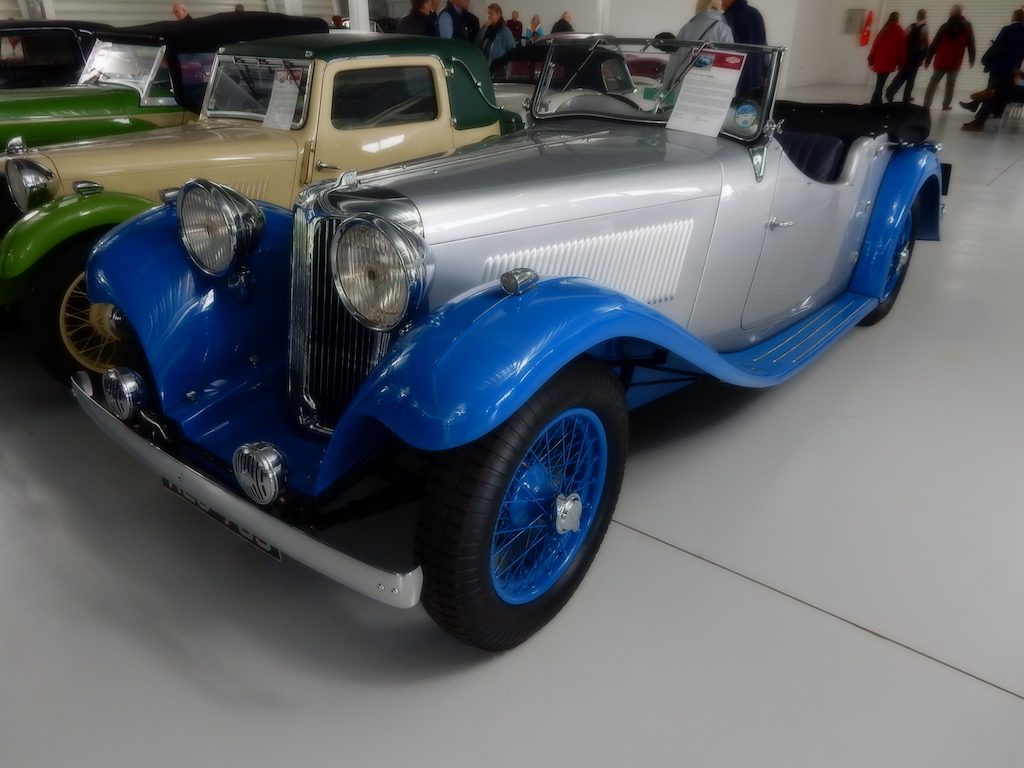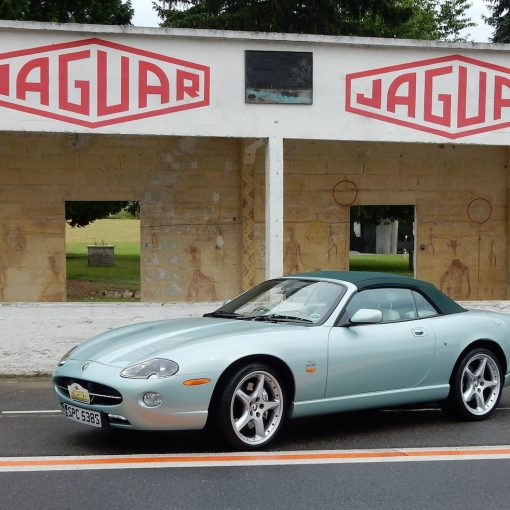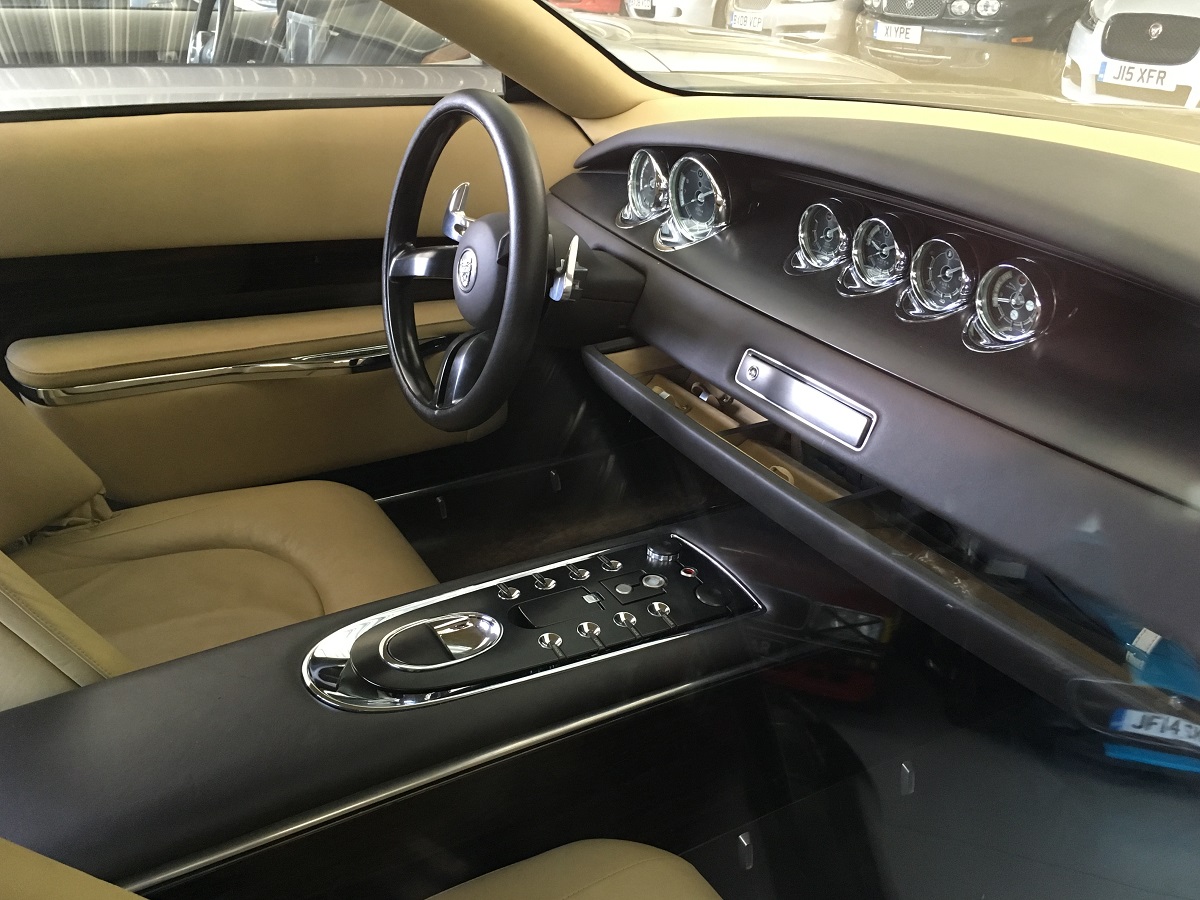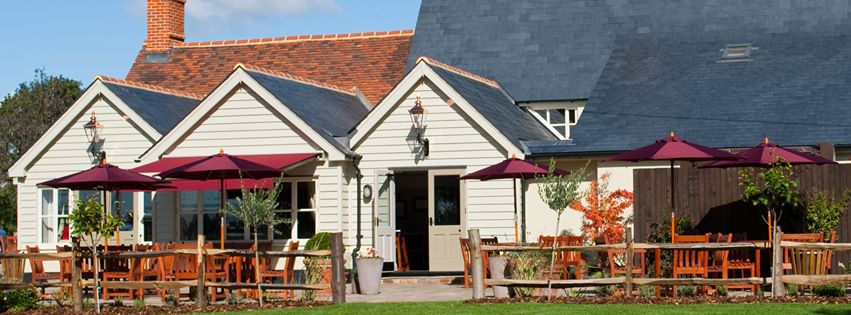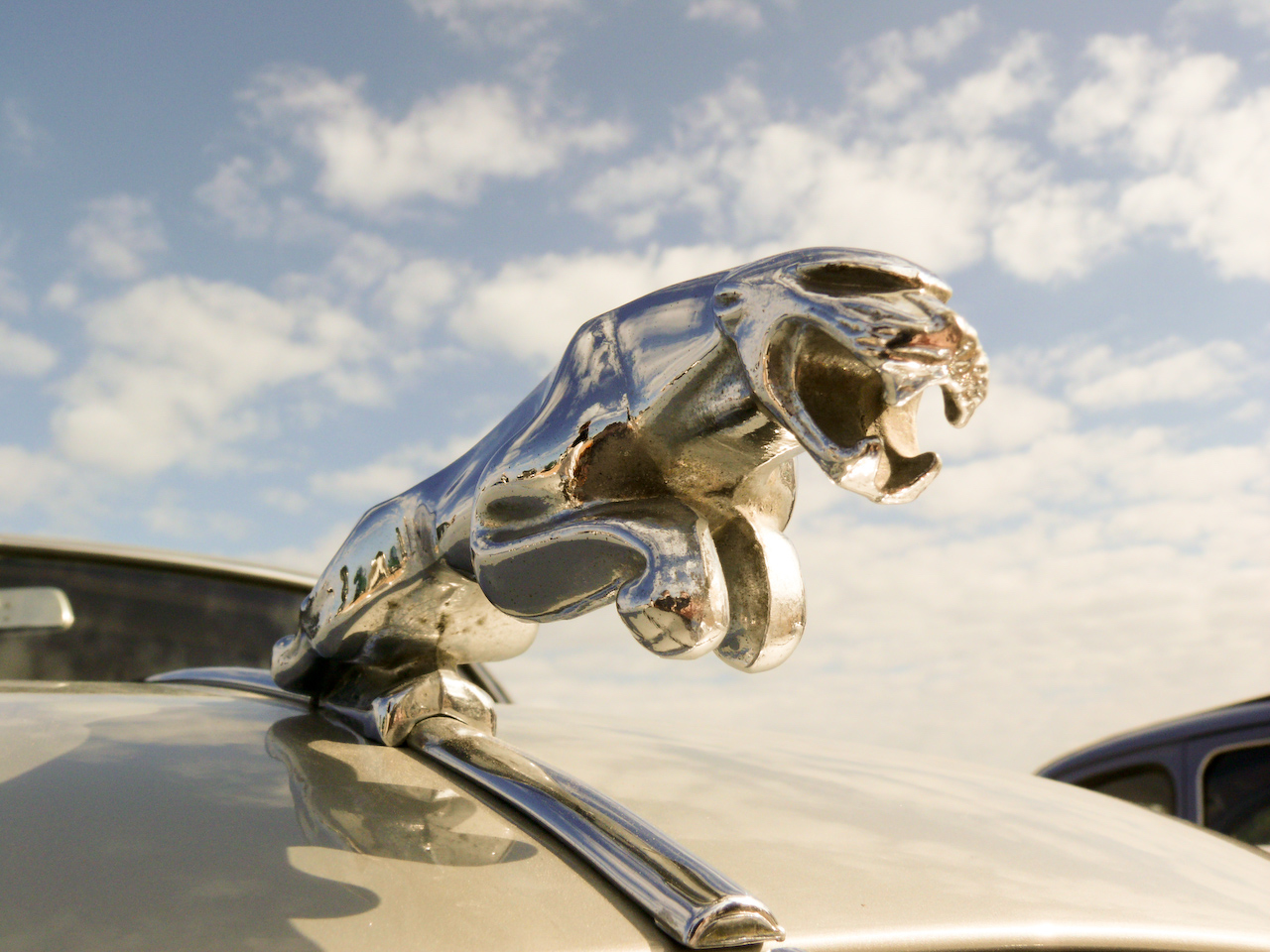On Saturday 1st October, a monthly Breakfast meeting was organised by Peter Simpson from the JEC at the National British Motor Museum at Gaydon, Warks. On this occasion Peter wanted to celebrate the 20th anniversary of the XK8 (X100)starting production and, to this end, invited all XK8/R owners from various Jaguar clubs. In the end over 250 owners of XK8/Rs attended, as well as XKs (X150), e-types, XJ40s, X300s and many more Jaguar models.
Since the club visited the British Motor museum in Gaydon during April 2015, there has been a multi-million pound investment in the site. The first thing to note since our visit is that the entrance to the main museum has changed and is now situated on the left side of the building, no doubt to give a better display area within. Also, there is now a separate exhibition hall on two floors for JLR, with many Jaguars from the Dr James Hull collection, as well as some important prototype Jaguars and Land Rovers.
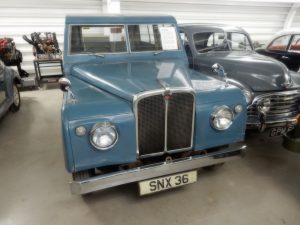 One Land Rover that stood out at the museum, was an early 1955 prototype. As sales flourished in the early 1950s, Rover began to explore the concept of a new model which would be positioned between its car range and the Land Rover models. It was to be more car-like but retain the cross country abilities of the Land Rover, without its utilitarian image. Rover settled on the name “Road Rover” for the project which began in 1952.
One Land Rover that stood out at the museum, was an early 1955 prototype. As sales flourished in the early 1950s, Rover began to explore the concept of a new model which would be positioned between its car range and the Land Rover models. It was to be more car-like but retain the cross country abilities of the Land Rover, without its utilitarian image. Rover settled on the name “Road Rover” for the project which began in 1952. 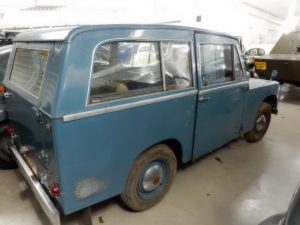 The initial “Road Rover” design was based on a modified P4 car chassis fitted with a Land Rover engine. Initially a four wheel drive unit was planned but later prototypes were rear wheel drive only. The austere and simple body was nicknamed “Greenhouse”. In common with its sister Land Rover with which it shares a resemblance, the first “Road Rover” made use of aluminium body panels.
The initial “Road Rover” design was based on a modified P4 car chassis fitted with a Land Rover engine. Initially a four wheel drive unit was planned but later prototypes were rear wheel drive only. The austere and simple body was nicknamed “Greenhouse”. In common with its sister Land Rover with which it shares a resemblance, the first “Road Rover” made use of aluminium body panels.
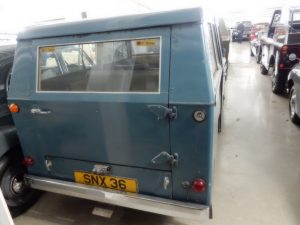 By 1955, Rover took a different approach to the project, the later Series II prototype taking styling cues from the American station wagon. The Road Rover project was finally abandoned in 1959, although a few years later, the work begun on ideas for the Range Rover, which would span the gap between car and 4×4 vehicles which Rover had identified two decades earlier. Here are pictures of the Road Rover.
By 1955, Rover took a different approach to the project, the later Series II prototype taking styling cues from the American station wagon. The Road Rover project was finally abandoned in 1959, although a few years later, the work begun on ideas for the Range Rover, which would span the gap between car and 4×4 vehicles which Rover had identified two decades earlier. Here are pictures of the Road Rover.
With regard to Jaguar prototypes, one that very noticeable to me, was the Jaguar C-XF. Unveiled at the Detroit Motor Show in January 2007, the Jaguar C-XF which was the work of Jaguar’s Design Director Ian Callum and the Head of Advance Studio Julian Thomson. This was their fourth concept car following the R-Coupe of 2001 also on display, the R-D6 of 2003 and the ALC of 2005. The sequence of these four cars demonstrates a remarkable transformation of Jaguar design from the style traditionally associated with the marque to a new, very different and, above all, very modern and contemporary approach.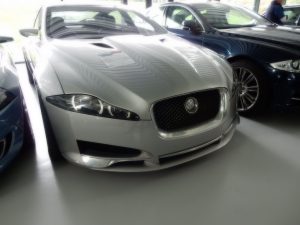
Despite the C-XF being a departure from any previous Jaguars, Ian Callum was very conscious of the Jaguar heritage. In his view, throughout its history Jaguar had created some of the most striking, modern and beautiful saloons. The object of the C-XF was to create a car which in the modern age had equally a greater impact, as the Jaguars of the past had in their day. The classic saloons, such as the Mark II and the original XJ gave Jaguar a unique position, which in Callum’s words “We’re having back.”
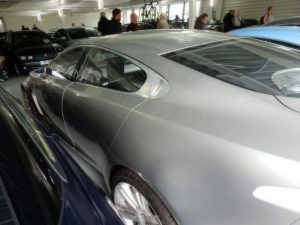 This concept car is bigger than the XF that it ended up as. Almost as long as a 2010 MY XJ LWB and lower. Fortunately, an XJ is parked in the museum next to the C-XF so comparisons can be made. Note that there is no visible door handle on the rear door; instead, it is incorporated in the rear window surround (familiar to some Alfas and Hondas) to make it more sporty. Unfortunately this wasn’t carried over the the production XF.
This concept car is bigger than the XF that it ended up as. Almost as long as a 2010 MY XJ LWB and lower. Fortunately, an XJ is parked in the museum next to the C-XF so comparisons can be made. Note that there is no visible door handle on the rear door; instead, it is incorporated in the rear window surround (familiar to some Alfas and Hondas) to make it more sporty. Unfortunately this wasn’t carried over the the production XF.
There are also a number of other Jaguar prototypes and concepts on display, such as the 2001 R coupe concept, 1988 Jaguar XJ42, 2000 Jaguar F Type concept and a 2002 polished aluminium XJR (X350 model). It appeared to me that virtually all models throughout Jaguar’s history were on display. One that caught my eye – possibly because of the colour as you can see from the photo below – was a 1933 SS1 16hp Tourer.
Doug Warren


